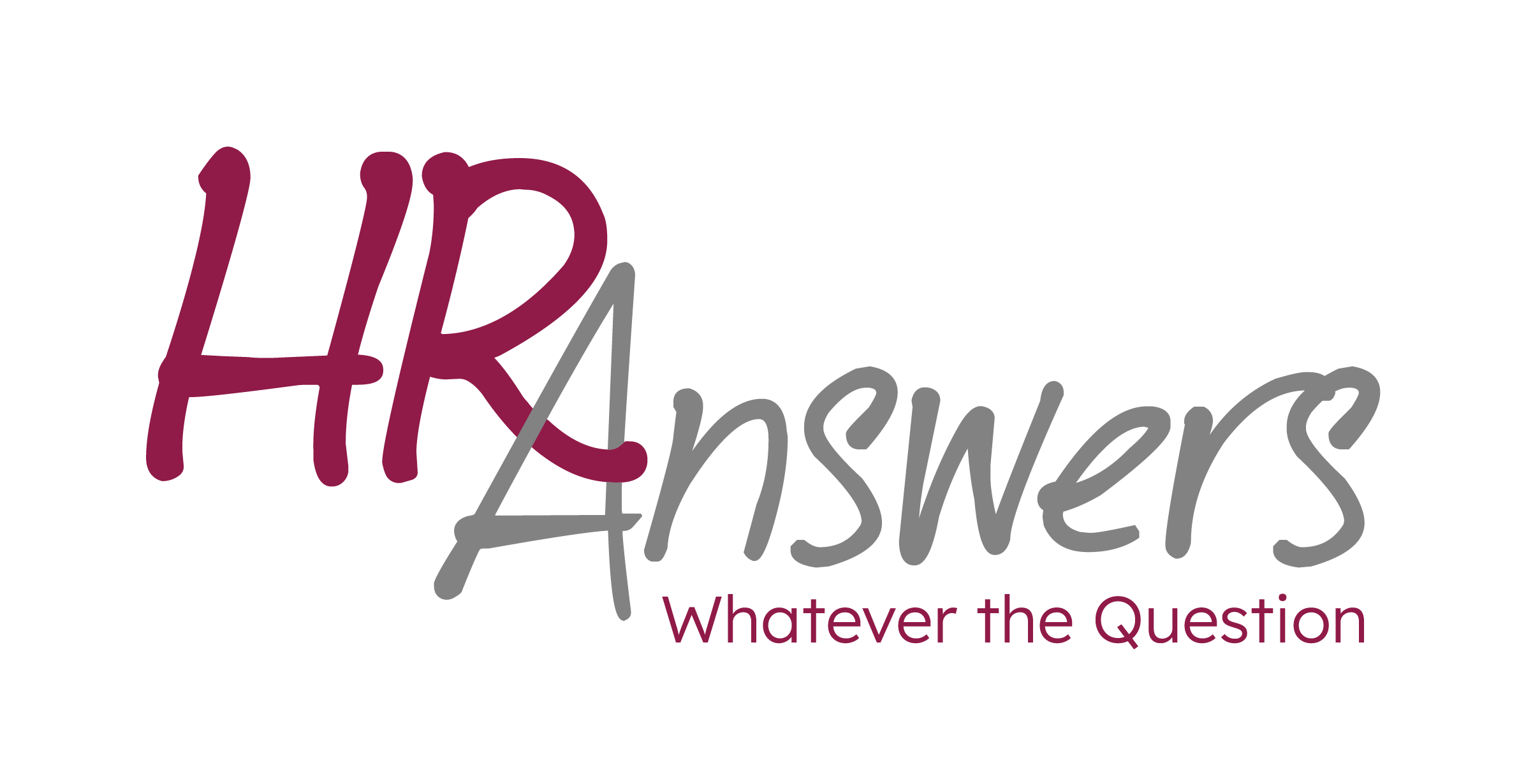A New Year – What is HR Considering?

As with any new year there can be excitement and uncertainty. The question of where HR will need to focus its energy on behalf of the business and employees is always top of mind. Many predict we will see continued friction between organizations and employees on issues ranging from work arrangements, wages, pay transparency, artificial intelligence, and more.
On the flip side of the coin, employers will step up their support for their workforce in a variety of ways, such as by providing benefits for parents, employees with student loans, personal development and upgrading skills, or address employees struggling with their mental health. Some organizations will continue to consider measures like remote work or a shortened work week to alleviate employee burnout.
Of course, depending on an organization’s revenue, size, and industry will certainly have an impact on which issues are their biggest priority.
Hybrid Work Schedules
New research from Gallup (1) finds that 8 out of 10 chief human resources officers (CHROs) from Fortune 500 firms have no plans to decrease remote work flexibility in the upcoming year. This aligns with employee expectations as well: 9 out of 10 remote-capable employees prefer some remote work flexibility, with the majority preferring hybrid work.
Businesses would be wise to let employees keep some degree of flexibility; research with Deloitte found that 2 out of 3 hybrid workers would leave their organization if they were required to go into the office full-time. Most of the articles and polls have found that either two or three days in the office is the optimal hybrid working arrangement for culture and performance.
As a subset of this conversation is HR spending more time working on programs, benefits, and flexibility options for working parents and women due to a lack of childcare support. Back in September 2023 $24 billion in federal funding for daycare providers across the U.S. came to an end. Some providers are raising prices to stay afloat, others may be forced to close or already have. In a survey from Civic Science (2), 51% of U.S. working mothers said it’s likely they’ll leave the workforce if they lose childcare in the coming months, compared with 39% of working fathers.
Artificial intelligence
While AI has been around for decades, the release of ChatGPT has resulted in major steps forward, including expanded use for HR and others in the workplace. McKinsey (3) notes that although previous waves of AI mostly affected physical work activities, gen AI is likely to have the biggest impact on knowledge work.
While 90% of leaders think their organization should be using gen AI or machine learning “often” or “almost always,” 60% said their organization rarely or never does this. It’s likely we’ll see this gap close as employers and employees gain more confidence in using AI as a tool. HR is already using it to draft job descriptions, policies, some training materials and more.
Employees struggling with stress, burn out and their effects on well-being
Gallup (4) recently reported that the majority of the world’s employees (around 6 out of 10) are quiet quitting — meaning they are actively disengaged at work.
This could be why in a study from Workplace Intelligence and Deloitte (5), around one-quarter of employees reported that their physical and mental health worsened last year (23% and 25%, respectively). According to the Business Group on Health (6), 77% of large employers reported an increase in their workforce’s mental health needs this year and another 16% anticipate one in the future.
With this in mind, employers will need to focus on improving access to mental health services, and they’ll also need to take a hard look at their culture — especially when it comes to eliminating toxic workplace behaviors. Great Place to Work (7) notes that organizations who have successfully overcome a toxic environment have focused on accepting accountability, taking action to address the issues at-hand, and using as many communication channels as possibles with employees.
Health benefit costs rising putting financial pressure on all
According to Mercer (8), high inflation, labor shortages, and other developments in the healthcare industry last year will have ripple effects on benefit costs in 2024. To temper cost growth, one strategy we will see in 2024 is an increased focus on improving patient outcomes. For employers, this could mean offering higher-quality care as well as more options for preventive care.
A Mercer survey conducted earlier this year identified several other strategies employers are either already using or considering using to slow their health cost growth without shifting cost to employees. These include offering programs to better manage specific health conditions (85%), curbing the costs of specialty prescription drugs (83%), focusing on virtual care offerings (66%), and providing navigation or advocacy services (48%).
Another financial burden for many is student loans. After a three-year pause that had provided relief to nearly 44 million borrowers in the U.S., student loan repayments resumed. Days after payments restarted, U.S. president Joe Biden canceled another $9 billion in student loan debt for 125,000 borrowers.
Unfortunately, employees’ financial stress can have significant repercussions for employers. In a study from Workplace Intelligence and BrightPlan (9), they found that on average employees are experiencing a productivity loss of eight hours a week due to their financial stress. This is costing U.S. businesses potentially $200 billion annually in lost productivity and engagement.
For employers, there’s a clear opportunity to support people’s financial well-being and ensure employees can stay focused at work. While SHRM reports (in it 2023 Employee Benefits Survey) that only 8% of U.S. employers currently provide student loan repayments for employees. This may be an attractor for you when hiring.
Talent Shortage
This continues to be the revolving door challenge for many HR departments. While numerous organizations continue to source and recruit talent, they continue to be disappointed in what they are finding. Two key themes are emerging. One alternative is to look internally and to develop from within. More and more organizations are creating opportunities, establishing learning environments and tools to promote from within and build the talent pool they need. The other option is to bring people on and understand you will need to teach on-the-job the knowledge and skills needed to perform at the level needed to be successful. Both will require a long-term approach to your investment in people.
Shorter Workweek
Although the idea of a shorter work week is nothing new, in 2024 we’ll see this approach gain traction as employees continue to struggle with burnout and an overall poor state of health. According to 976 business leaders surveyed by ResumeBuilder.com, 20 percent of the employers already have a four-day workweek. Another 41 percent said they plan to implement a four-day week, at least on a trial basis.
We all know that just like all positions cannot work remotely some organizations have departments and positions that reducing the workweek may have other complications. Some organizations that are 24/7 or serving customers outside US and other considerations will have to carefully be weighed before implementation. HR will have to conduct a SWOT analysis to consider the payoffs vs. challenges and where the benefits lie for the organization and its employees. What HR department would not like to see less burnout, improved health, and more job satisfaction among its employees?
However, most organizations are helping their team members now achieve greater efficiency by reviewing job descriptions, eliminating unnecessary meetings, encouraging the use of blocking out time for focused work, and automating basic tasks. Perhaps this is where adopting AI usage comes in – to complete some job tasks to make them more efficient.
Labor – Union Strikes
Across the U.S., a tight labor market, working conditions, and other considerations have led to contract negotiations, strikes, and walkouts in numerous industries in 2023. According to Bureau Labor Statistics data (10), through August 2023 nearly 309,700 workers have been involved in work stoppages, which means 2023 will likely be the busiest year for strikes since 2019.
We all heard and saw the news covering The United Auto Workers, Hollywood writers’ strike, Las Vegas to boost wages for hospitality workers, Kaiser Permanente workers walked off the job in the largest ever strike in the U.S. healthcare field, Pharmacy workers reduced hours or closures and the most recent public transit walkout and strike activity. HR needs to keep an eye out for how employees are viewing their environments and how the culture is treating them. This is a time for truly listening to our people to learn what is working and what is not and how we can come together and work together to solve the challenges.
We invite you to join us for a discussion on What’s Next For HR on March 13th during our monthly HR Lunch Bunch. We will discuss these and other trends and predictions for HR – for 2024 and beyond. You can RSVP here.
Citations
- The Future of the Office Has Arrived: It’s Hybrid; By Ben Wigert, Jim Harter, and Sangeeta Agrawal https://www.gallup.com/workplace/511994/future-office-arrived-hybrid.aspx
- The End of Pandemic Funding Stands to Further Disrupt Childcare, Especially for Working Moms https://civicscience.com/the-end-of-pandemic-funding-stands-to-further-disrupt-childcare-especially-for-working-moms/
- What’s the Future of Generative AI? From McKinsey and Company https://www.mckinsey.com/featured-insights/mckinsey-explainers/whats-the-future-of-generative-ai-an-early-view-in-15-charts
- . State of the Global Workplace: 2023 Report https://www.gallup.com/workplace/349484/state-of-the-global-workplace.aspx
- As Workforce Well-being Clips, Leaders Ask: What Will it Take to Move the Needle? https://www2.deloitte.com/us/en/insights/topics/talent/workplace-well-being-research.html
- 2024 Large Employer Health Care Strategy Survey https://www.businessgrouphealth.org/resources/2024-large-employer-health-care-strategy-survey-intro
- Changing a Toxic Company Culture https://www.greatplacetowork.com/resources/blog/changing-a-toxic-company-culture-3-steps
- Health Benefit Cost Expected to rise 5.4% in 2024 https://www.mercer.com/en-us/insights/us-health-news/health-benefit-cost-expected-to-rise-54-in-2024-mercer-survey/
- Financial Stress is Hurting Relationships, Well-being and Organizational Success https://www.brightplan.com/2023-wellness-barometer-survey
- BLS – U.S. Bureau of Labor and Statistics https://www.bls.gov/wsp/
Looking for previously written Advantage eNewsletters or HR ALERTS?
